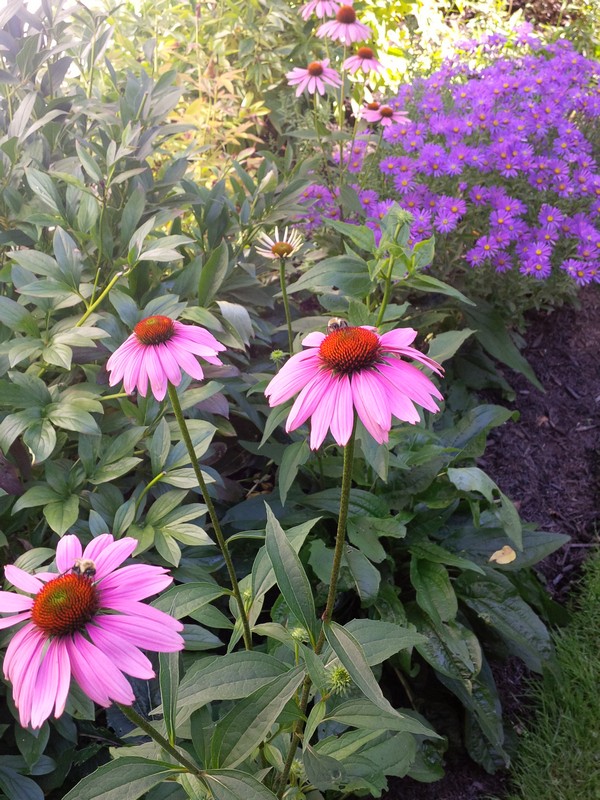Replacing the grass and growing native plants
Marilyn Whitaker
A grassroots movement has been growing to replace or reduce lawns with diverse garden plants, including native plants. Already some Sandy Hill residents have taken the initiative. Mowing grassy slopes is difficult and a mix of trees, shrubs, perennials, annuals, fruits and vegetables can also create ecosystems for plant and animal life, help with climate resiliency, offer fresh food, and provide interesting and beautiful spaces. Recently, the Environment Committee of Action Sandy Hill has launched a “Replacing the Grass” initiative to encourage residents to reduce lawn areas and replace them with a variety of plants, especially native plants.
Groups such as Pollinator Partnership Canada, note that “One out of every three bites of food we eat is on our table because of pollinators.” For some years, people like Prof. Douglas Tallamy have been arguing that the drastic decline in wildlife populations is due in part to the disappearance of native plants on which they depend. In books like Nature’s Best Hope and Bringing Nature Home, Tallamy encourages homeowners to turn their yards into conservation corridors that provide wildlife habitats. He urges people to take environmental action into their own hands, one yard at a time.
In June 2023, changes were approved to Ottawa’s Use and Care of Roads Bylaw. These allow residents to replace grass monocultures within the front yard municipal easement adjacent to the public sidewalk and roadway. Some restrictions include: no fruits, vegetables or herbs are permitted within the municipal right-of-way; plants can only reach a maximum height of one metre; residents can only hand dig the area to plant their gardens. Noxious weeds and invasive species, as defined in the Ontario Invasive Species Act, as well as the Ontario Weed Control Act, continue to be prohibited. In making these changes, the City acknowledged a host of benefits of more gardening options, including: encouraging naturalization, pollinator gardens, and biodiversity while avoiding monocultures; reducing fertilizer, pesticide, and herbicide usage; improving stormwater retention; and contributing to climate resiliency.
Plant nurseries are starting to feature more native plants and so getting native plants is easier than before. Groups like the Ottawa Wildflower Seed Library (www.wildflowerseedlibrary.ca) have started seed exchanges and provide growing advice on winter sowing. Currently, as part of the ASH “Replacing the Grass” project, people throughout Sandy Hill are giving wildflower seeds the cold treatment needed for their germination and growth. The intent is that plants will be available for sale at the Sandy Hill EcoFair on June 1, when people will have the opportunity to select wildflowers for their gardens. If you would like to find out more about this project and how you could help, please contact the ASH Environment Committee and marilynwonash@gmail.com or bdewalt.ash@gmail.com or look for updates and events in the coming months.

Photo: Marilyn Whitaker